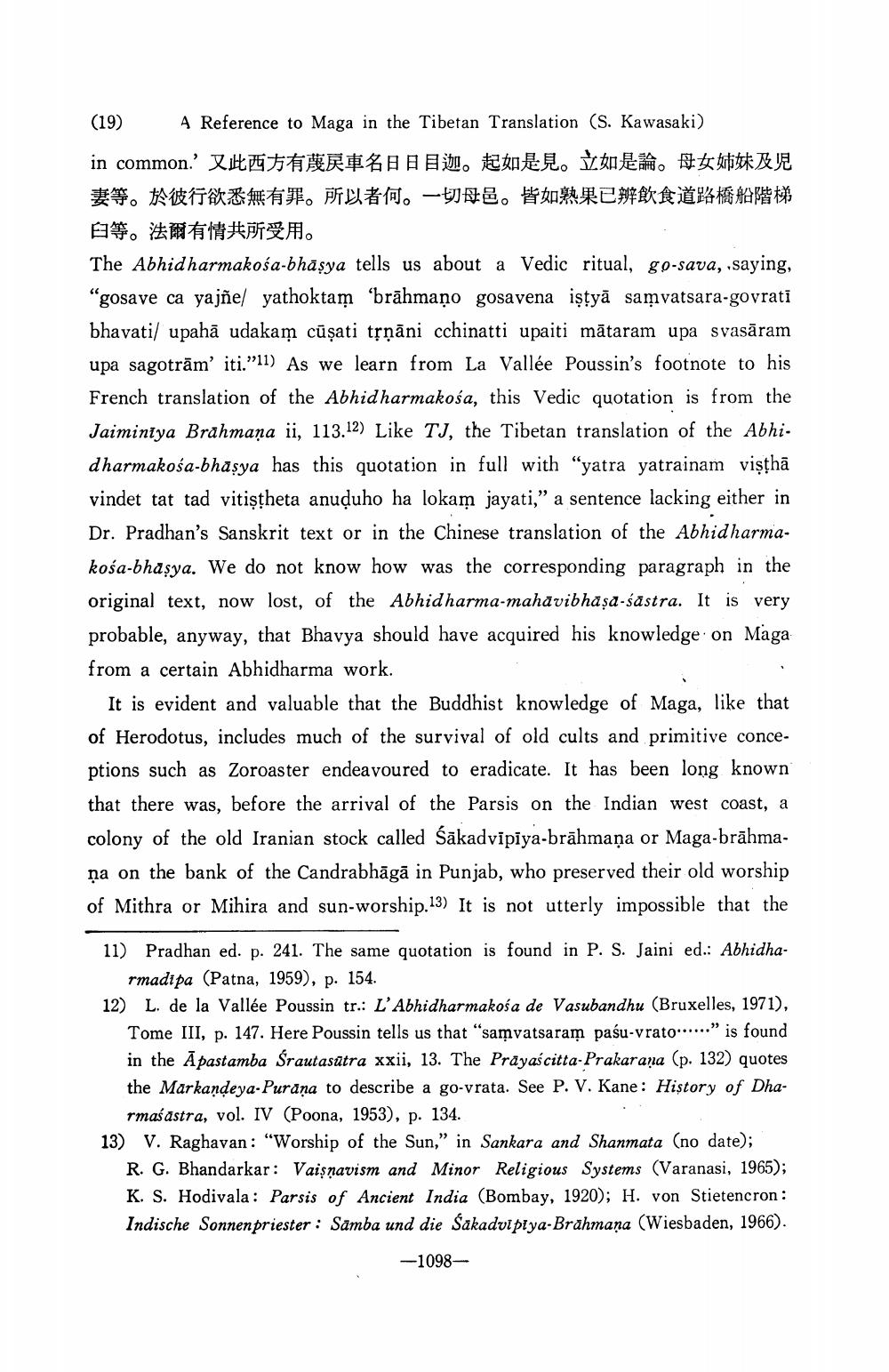Book Title: Reference To Maga In Tibetan Translation Of Tarkajvala Author(s): Shinjo Kawasaki Publisher: Shinjo Kawasaki View full book textPage 6
________________ (19) Reference to Maga in the Tibetan Translation (S. Kawasaki) in common.' Xit G W h en EL. E te bertituki *. HAWTTE . DUM -J38. 2#££ÉBats Her Be # E The Abhidharmakośa-bhāsya tells us about a Vedic ritual, go-sava, .saying, "gosave ca yajñe/ yathoktam brāhmaṇo gosavena iștyā samvatsara-govrati bhavati/ upahā udakam cūșati tļņāni cchinatti upaiti mātaram upa svasāram upa sagotrām'iti.”11) As we learn from La Vallée Poussin's footnote to his French translation of the Abhidharmakośa, this Vedic quotation is from the Jaiminiya Brahmaņa ii, 113.12) Like TJ, the Tibetan translation of the Abhidharmakośa-bhasya has this quotation in full with "yatra yatrainam vişthā vindet tat tad vitiştheta anuduho ha lokam jayati,” a sentence lacking either in Dr. Pradhan's Sanskrit text or in the Chinese translation of the Abhidharmakośa-bhașya. We do not know how was the corresponding paragraph in the original text, now lost, of the Abhidharma-mahavibhāșa-śāstra. It is very probable, anyway, that Bhavya should have acquired his knowledge on Maga from a certain Abhidharma work. It is evident and valuable that the Buddhist knowledge of Maga, like that of Herodotus, includes much of the survival of old cults and primitive conceptions such as Zoroaster endeavoured to eradicate. It has been long known that there was, before the arrival of the Parsis on the Indian west coast, a colony of the old Iranian stock called sākadvipīya-brāhmaṇa or Maga-brāhmaņa on the bank of the Candrabhāgā in Punjab, who preserved their old worship of Mithra or Mihira and sun-worship.13) It is not utterly impossible that the 11) Pradhan ed. p. 241. The same quotation is found in P. S. Jaini ed.: Abhidha rmadipa (Patna, 1959), p. 154. 12) L. de la Vallée Poussin tr.: L'Abhidharmakośa de Vasubandhu (Bruxelles, 1971), Tome III, p. 147. Here Poussin tells us that "samvatsaram pasu-vrato......" is found in the Abastamba Srautasütra xxii, 13. The Prayascitta-Prakarana (p. 132) quotes the Markandeya-Purana to describe a go-vrata. See P. V. Kane: History of Dha rmasastra, vol. IV (Poona, 1953), p. 134. 13) V. Raghavan: "Worship of the Sun," in Sankara and Shanmata (no date); R. G. Bhandarkar: Vaişnavism and Minor Religious Systems (Varanasi, 1965); K. S. Hodivala : Parsis of Ancient India (Bombay, 1920); H. von Stietencron: Indische Sonnenpriester : Samba und die Sakadviptya-Brahmana (Wiesbaden, 1966). -1098Page Navigation
1 ... 4 5 6 7 8
